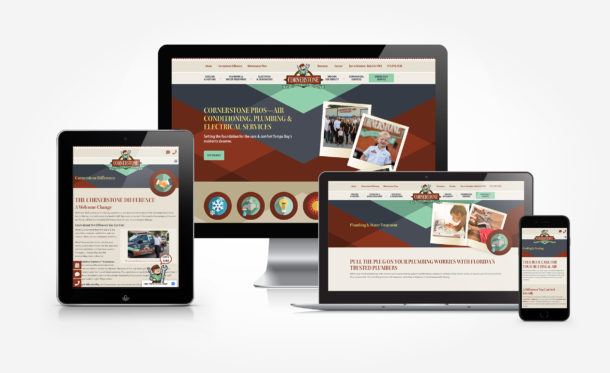By Jenny Benbrook Home service contractors put serious money into field service management (FSM) software and other digital tools, expecting them to streamline operations, boost profits, and create a better experience for both technicians and customers. But too often, they fall into the “perceived efficiency” trap, assuming that just having the software in place will Read more
business strategy

By Jenny Benbrook
Home service contractors put serious money into field service management (FSM) software and other digital tools, expecting them to streamline operations, boost profits, and create a better experience for both technicians and customers. But too often, they fall into the “perceived efficiency” trap, assuming that just having the software in place will deliver results.
The reality? Without a strategic approach to budgeting, implementation, training, and ongoing management, that investment can become an expensive headache instead of a game-changer. Technology should serve the business, not the other way around. The right tools, aligned with business goals and managed effectively, can maximize efficiency, improve workflows, and drive real revenue growth.
Why Implementation is Just the Beginning
FSM platforms like ServiceTitan and FieldEdge are powerful tools that can transform a business—when properly set up, used, and maintained. These platforms provide insights into operations, from tracking inventory and equipment maintenance to optimizing technician scheduling and following up on unsold estimates.
Take unsold estimates as an example. Contractors spend a fortune on marketing, lead generation, and technician dispatch just to get an estimate in front of a potential customer. But if that estimate isn’t followed up on, it’s money wasted. Leveraging FSM software to track, automate follow-ups, and increase close rates can unlock millions in revenue, turning lost opportunities into booked jobs.
But software success doesn’t stop at implementation. Without a proper training plan, standardized workflows, and dedicated oversight, even a well-implemented system can fall apart. Poor training leads to inconsistent usage, undocumented workflows create confusion, and a lack of tech stack management causes inefficiencies that negate the software’s benefits. A tool is only as good as the process it supports. If you don’t have a plan, technology just becomes another expense.

Common Roadblocks to Long-Term Software Success
Many contractors struggle with software adoption and optimization due to several key challenges:
Time Commitment: Learning a new platform takes time, and so does training a team to use it correctly. Without dedicated effort, even the best software won’t deliver its full potential.
Change Resistance: Asking a seasoned team to adopt new workflows can be tough. People get comfortable with how they work, and changing that, even for the better, can be met with pushback.
Lack of a Clear Plan: Many businesses invest in software without defining what success looks like. Without clear goals, implementation lacks direction, and the software’s value isn’t fully realized.
No Dedicated Tech Stack Management: Software is not a one-and-done purchase, it requires an ongoing financial commitment for optimization, training, and troubleshooting. Without a dedicated resource to manage the tech stack, inefficiencies and outdated workflows can creep in, reducing ROI.
Overwhelm from Too Many Tools: Contractors are drowning in technology options, with too many tools and no strategy. The greatest risk isn’t adopting technology too quickly, it’s adopting it without intention.
Getting the Most Out of Your Investment
To avoid these pitfalls, contractors should approach software implementation and long-term success with a structured plan. Here’s how to start:
Set Specific Goals – Identify what you want to achieve with your software. Are you trying to increase technician efficiency? Reduce inventory waste? Close more estimates? Improve customer communication? Define success in measurable terms.
Dedicate Financial Resources – Contractors should allocate 2-5% of projected annual revenue toward technology. This budget should not only cover software licensing but also implementation, training, ongoing support, and a dedicated internal or external resource to manage the tech stack. A clear roadmap prevents wasted time and money. Technology adoption should be intentional, seamless, and impactful.
Develop a Standardized Training Plan – A good implementation won’t matter if your team doesn’t know how to use the software correctly. Learning technology is not a one-and-done activity. Establish a structured training process, provide documentation, and offer continuous learning opportunities to keep employees up to speed.
Document and Maintain Workflows – Standardized processes ensure that every team member is using the software consistently. Powerhouse Consulting Group provides a structured, step-by-step approach to technology adoption with a technology playbook to ensure proper implementation, set expectations, process documentation, training, and more.
Invest in Ongoing Optimization – Success requires ongoing optimization, not just a one-time setup. Technology changes daily, and businesses need structured validation, tracking performance, optimizing workflows, and driving measurable results over time.
Why Professional Guidance Pays Off
Contractors don’t expect customers to install HVAC systems or electrical panels without professional expertise, so why should software be any different? FSM consultants spend thousands of hours mastering these platforms, learning the best configurations, workflows, and integrations to maximize their value.
Trying to implement a major system without expert help is like wiring your house without an electrician. You might get some lights to work, but it won’t be safe, efficient, or built to last. Powerhouse Consulting Group is the trusted guide for technology adoption, ensuring that tools are used efficiently and effectively. We don’t just vet and implement tools; we teach contractors how to maximize their value.
Final Thoughts
The future of the trades isn’t just about fixing what’s broken, it’s about anticipating what’s next. The industry is shifting toward data-driven decision-making, and contractors who strategically implement technology now will lead in the next 5-10 years. Investing in technology isn’t just about tools, it’s about building a scalable business.
Powerhouse isn’t just a consultant; we are a strategic partner helping contractors scale and thrive. Our hands-on, business-first approach ensures that contractors get real value from their technology investments. There is no easy button, but contractors who put in the work and follow the right process will build sustainable, profitable businesses.

Jenny Benbrook is the founder and CEO of Powerhouse Consulting Group. Drawing from more than 20 years of experience in the skilled trades, Jenny provides strategic coaching and consultation for home service businesses seeking to make the most of their software investments. Powerhouse Consulting Group is the first and only ServiceTitan Titanium Partner, and also provides in-depth expertise regarding FieldEdge. More information is available at mypowerhouse.group.

There are a lot of plumbing businesses out there, and many of them are still doing business the old-fashioned way. However, if you’re looking to take your plumbing business online, you’re going to need to do some things differently. This blog post will discuss how to take your plumbing business online and give you a Read more
There are a lot of plumbing businesses out there, and many of them are still doing business the old-fashioned way. However, if you’re looking to take your plumbing business online, you’re going to need to do some things differently. This blog post will discuss how to take your plumbing business online and give you a few tips on making it successful.
Create a website
The first thing you need to do is create a website. This is where potential customers will go to learn more about your business and what services you offer. Make sure your website is professional and easy to navigate. Include clear contact information and a call to action. If you feel like you don’t have the expertise to create a website yourself, consider utilizing the services of a professional developer that can not only design an attractive website, but also integrate useful tools such as a payment gateway API to ensure ease of use for your customers.

Use social media
Social media is a great way to connect with potential and current customers. Create accounts on popular platforms like Facebook, Twitter, and Instagram. Use these platforms to share information about your business, special offers, and helpful tips. Make sure you’re active on social media and responsive to comments and questions. Social media is a great way to build relationships with your customers. Also, don’t forget to include links to your website and social media accounts on your website. This will make it easy for visitors to find you online.
Get listed in online directories
There are a number of online directories where you can list your business. This makes it easier for potential customers to find you when they’re searching for plumbing services in their area. Some popular online directories include Yelp, Angie’s List, and HomeAdvisor. Make sure you take the time to create a complete and accurate listing. Include as much information as possible, such as your business hours, services offered, and contact information.
Use search engine optimization
Search engine optimization (SEO) is the process of optimizing your website to rank higher in search engine results. This is important because it makes it more likely that potential customers will find your website when they’re searching for plumbing services online. There are a number of things you can do to optimize your website for SEO. This includes using relevant keywords, creating quality content, and building backlinks. SEO is an integral part of taking your plumbing business online. By optimizing your website, you can make it more likely that potential customers will find you and learn about your business.
In conclusion, these are just a few tips on how to take your plumbing business online. By following these tips, you’ll be well on your way to success and reaching a wider audience of potential customers.
